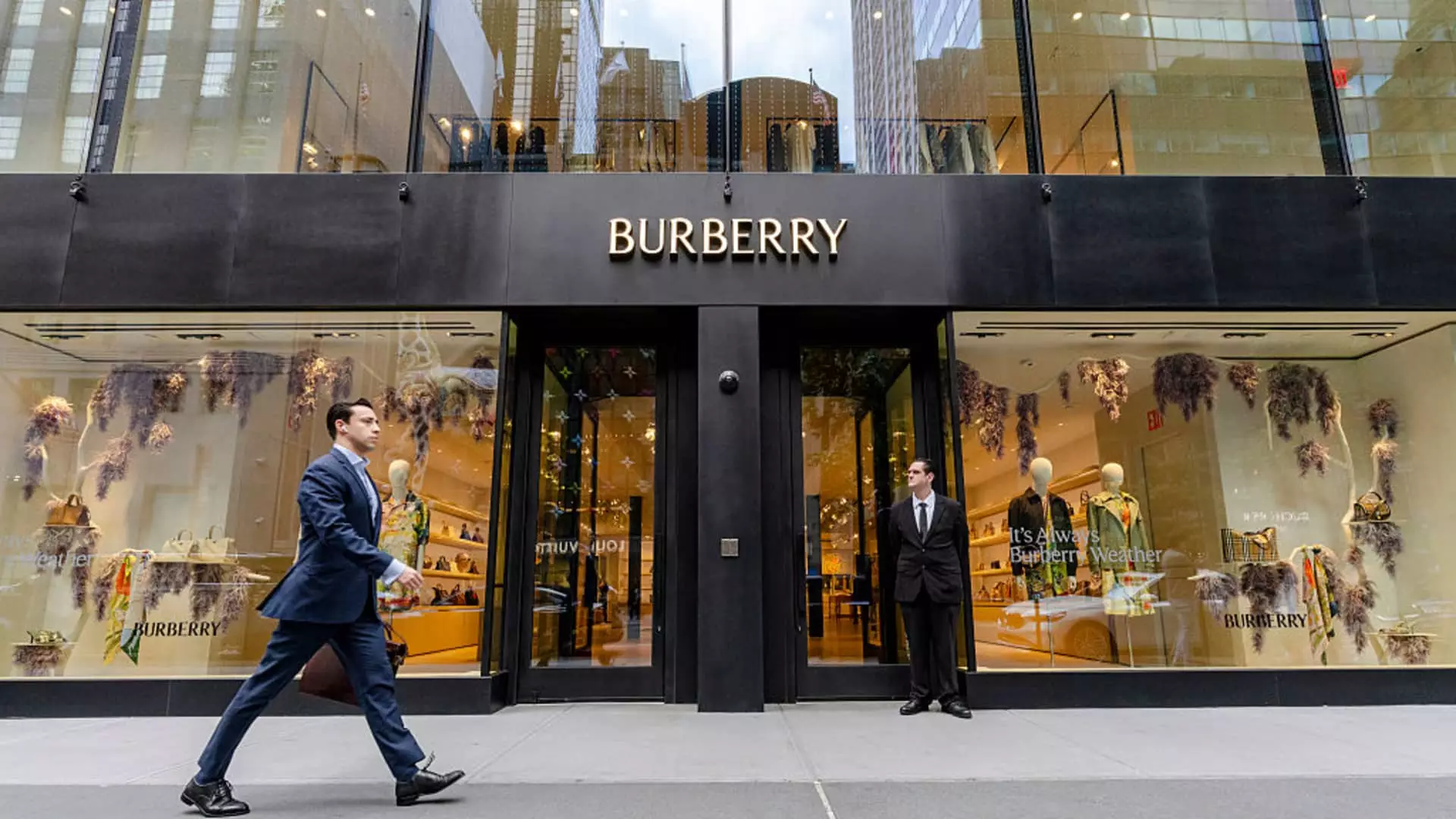The recent uptick in Burberry’s sales within the American market does little to mask the ongoing struggles faced by this iconic luxury house. A modest 4% increase in the Americas, while initially promising, hovers on a precarious edge—more of a spark than a fire—illuminating the unpredictable and often unstable nature of consumer behavior in today’s turbulent economic climate. This increment, viewed through a lens of critical analysis, suggests that Burberry’s so-called “turnaround” is less a testament to genuine brand strength and more a reflection of transient regional factors and marketing maneuvers.
The narrative spun by the company’s executives emphasizes a “diversity of the luxury consumer,” but this point oversimplifies a more complex reality: the American luxury market remains fractured, susceptible to macroeconomic headwinds, and increasingly driven by fleeting trends rather than rooted loyalty. The fact that U.S. sales account for merely 19% of Burberry’s revenue indicates that the brand’s fortunes are disproportionately tied to a segment of the market that is both volatile and vulnerable to broader economic shocks such as tariffs and inflation. Relying on a narrow, fluctuating consumer base undermines any declaration of sustainable growth.
The Broader Context of a Luxury Sector in Decline
Despite optimism about localized improvements, the overall group revenues still faltered, dipping 1% year-on-year on a comparable basis. This decline is a sobering reminder that Burberry, like many of its contemporaries, is navigating a confluence of challenges—slowing Chinese demand, disrupted tourism flows, and geopolitical tensions—that threaten to undo any short-term gains. The luxury sector’s fragile recovery appears to be more illusion than substance; a mirage built on targeted marketing and strategic cost-cutting rather than intrinsic brand appeal.
In particular, the lingering effects of U.S. tariffs loom as a tangible barrier. Though Burberry has claimed to have made surgical adjustments, such measures seem like band-aids on a wound that requires more substantial systemic remedies. The sector’s future stability depends on broader economic policies and geopolitical stability—factors outside the influence of corporate leadership or branding strategies. Yet, there remains a misguided optimism echoing from corporate quarters that superficial tweaks can sustain long-term growth—a notion that ignores the deeper structural vulnerabilities of the luxury industry.
Leadership Changes and Strategic Overhauls: Are They Enough?
The one-year tenure of CEO Joshua Schulman marks a period of significant upheaval and reform effort. His arrival, after years of sluggish performance, was heralded as a chance for renewal, yet the results are mixed at best. The company’s announcement of job cuts and cost-savings initiatives signals an acceptance of the need to trim fat rather than genuinely reinvent the brand. Such measures may provide short-term financial relief but risk alienating the very loyal consumers whose support is vital for durable success.
Furthermore, the emphasis on reasserting Britishness and the iconic check pattern as core marketing themes, while superficially appealing, may not sufficiently address the fundamental shifts in consumer preferences—driven increasingly by sustainability concerns, digital engagement, and social consciousness. These elements are often overlooked in traditional luxury narratives but are crucial to engaging a younger, more aware demographic that questions the very values of heritage brands rooted in aristocratic elegance and exclusivity.
The Future of Heritage in a Changing World
In a broader sense, Burberry’s current trajectory exemplifies the limitations of clinging to heritage as a primary branding asset. Romanticized notions of British tradition and timeless craftsmanship are not enough to sustain relevance in a world where consumers seek authenticity, values, and innovation. The luxury house’s dependence on a limited image risks stagnation unless it evolves beyond its storied past and confronts the realities of modern consumer expectations.
The attempted rebranding efforts, including marketing strategies and cost cuts, are symptomatic of a deeper identity crisis. The challenge lies not only in adapting products or adjusting prices but in fundamentally reimagining what luxury means today—balancing tradition with relevance, exclusivity with accessibility, and heritage with innovation. Without this shift, Burberry risks its narrative as a venerable institution devolving into just another brand struggling to keep pace with faster, more purpose-driven competitors.
In essence, Burberry’s recent “success” in the Americas is a fragile, fleeting phenomenon—an echo of strategic patchwork rather than a foundation for enduring growth. The company’s future hinges on whether it can navigate the turbulent currents of global markets with genuine authenticity and resilience, rather than relying on superficial measures and nostalgic branding in hopes that they will carry it through another turbulent quarter.


Leave a Reply